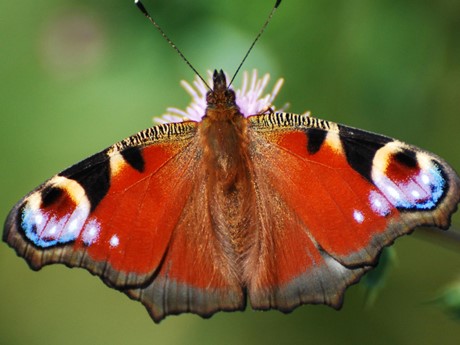Seasonal reports
Our seasonal reports are based on your records.
Can you remember what the weather was like this time last year and how plants and animal were responding? Did snowdrops flower earlier than usual last spring and did the trees hold onto their leaves for longer than usual in the autumn?
Our seasonal reports help to answer these questions.
Previous results
-
2018
-
Autumn 2018
Autumn 2018 was a largely warm season, especially July. The UK average date for each species and event in autumn 2018 was compared to the UK average date in the benchmark year of 2007.* There was no overall pattern to the dates in 2018; some species and events were earlier than the benchmark year, whereas others were later.
-
Spring 2018
The mild winter and early spring wildlife activity was blasted away by the cold and snow of February and March which put a halt to most new spring wildlife sightings. From April the weather became warmer and drier and spring got started again. Overall, 58 of 78 events were early compared to 2001. Five were the same and 15 were late. This may seem strange as the extreme cold of relatively short periods during February and March may have skewed our perception of how cold the spring was overall.
-
-
2017
-
Autumn 2017
The autumn season started on a cool and damp note followed by a warm and dry October. November was dry and cold, but had higher sunshine hours than average. December was an unsettled mixture of mild weather and windy storms. Most autumn species and events were recorded earlier than during the benchmark year. The exceptions were the arrival of fieldfare and redwing, full tint and first ripe fruit of beech, and bare tree for sessile oak and rowan.
-
Spring 2017
In general it was a warm and dry start to the year compared with 30 year averages from the Met office. This was reflected in your records with 75 out of 78 events occurring early when compared to 2001, with some events over three weeks earlier. The exceptions were spotter flycatcher, swift, and red-tailed bumble bee first recorded which were slightly late.
-
-
2016
-
Autumn 2016
A warm start to the autumn 2016 recording season was followed by a sunny October and November and a dry December. Most autumn species and events were recorded later than during the benchmark year of 2007. The exceptions were the departure of migrating birds and the date of lawn last cut.
-
Spring 2016
Spring 2016 came early during a mild December that saw a record breaking average temperature. Most spring species and events were recorded earlier than during the benchmark year of 2001. We found that average records for some events were a whole month earlier than during the benchmark year. These included hazel first flowering, elder budburst and song thrush first singing.
-
-
2015
-
Autumn 2015
During autumn 2015 we saw some exceptional weather, with flooding prominent in the news. Most 2015 fruiting scores were lower compared to the 2007 benchmark year and fruit ripening was later for all species. On average, leaf tinting was also later, but bare tree was not, possibly because of defoliation by the regular autumn storms.
-
Spring 2015
After a benign and mild winter, spring 2015 was unexceptional - not quite as warm as 2014, and certainly not as cold as 2013. Temperatures in spring 2015 were near the benchmark year of 2001. Most of our spring events were recorded on average earlier than in 2013 but later than in 2014, though many were still recorded somewhat earlier than in the benchmark year itself.
-
-
2014
-
Autumn 2014
-
Spring 2014
-
